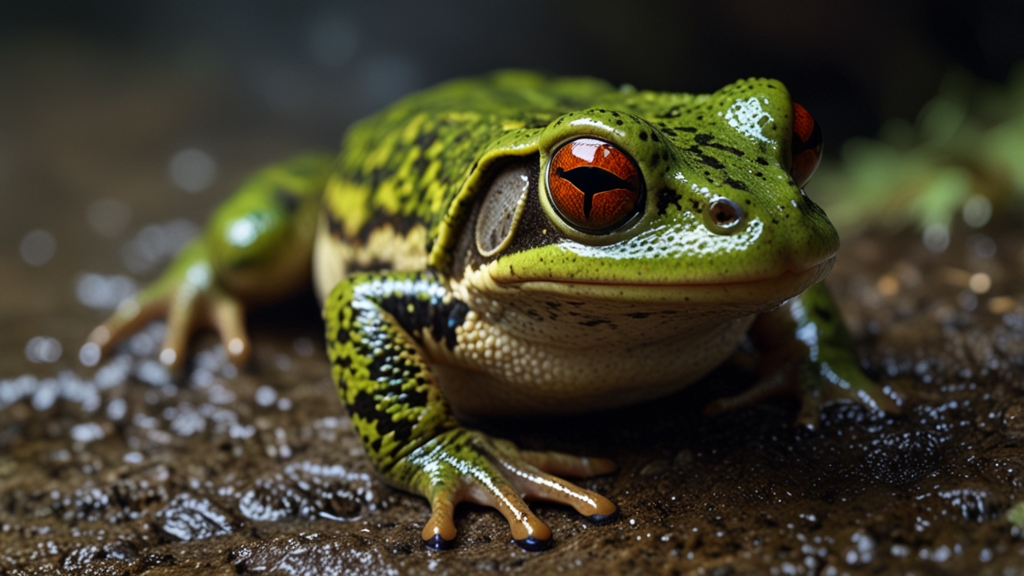Why Amphibians Could Be the Next Extinct Species
Amphibians, a unique and diverse class of animals including frogs, salamanders, and newts, have thrived on Earth for over 360 million years. Unfortunately, this ancient lineage is now facing an unprecedented extinction crisis. Several interrelated threats, ranging from habitat loss and climate change to pollution and disease, are contributing to a rapid and alarming decline in amphibian populations worldwide.
Habitat Destruction and Fragmentation
The most immediate threat to amphibians is habitat destruction. Wetlands, forests, and other natural habitats are being rapidly converted into agricultural land, urban areas, and industrial zones. As amphibians rely on specific environmental conditions—such as moist environments for breeding—their survival is directly tied to the availability of suitable habitats.
Fragmentation of habitats exacerbates the problem, as isolated populations become more vulnerable to environmental changes, limiting their ability to recover and migrate. For species with limited mobility, such as many amphibians, this isolation can be a death sentence.
The conversion of natural habitats into human-dominated landscapes is a primary driver of biodiversity loss and species extinction globally.
Climate Change
Climate change is another critical factor contributing to the decline of amphibian populations. Amphibians are highly sensitive to changes in temperature and humidity due to their ectothermic (cold-blooded) nature. Rising global temperatures and altered precipitation patterns disrupt their breeding cycles, physiological functions, and food availability.
In addition, extreme weather events and prolonged droughts can dry up breeding sites and reduce the availability of suitable habitats. Some species, unable to adapt or migrate quickly enough, face a heightened risk of extinction.
Pollution
Environmental pollution, including pesticides, heavy metals, and industrial chemicals, is another major threat. Amphibians have permeable skin, which makes them particularly susceptible to pollutants. Contaminants can lead to genetic mutations, developmental abnormalities, and decreased reproductive success.
Runoff from agricultural fields and urban areas introduces a toxic cocktail of chemicals into natural water bodies, severely impacting amphibian populations. Even low concentrations of pollutants can have lethal or sub-lethal effects, weakening amphibians' immune systems and making them more susceptible to diseases.
Disease
Emerging infectious diseases have become a significant cause of amphibian declines. The chytrid fungus (Batrachochytrium dendrobatidis) and the ranavirus are two notorious pathogens decimating populations around the globe. These diseases cause skin infections, impair amphibians' ability to absorb water and electrolytes, and often lead to rapid, large-scale die-offs.
The chytrid fungus has been linked to dramatic population declines and extinctions of over 200 amphibian species worldwide.
Invasive Species
The introduction of invasive species is another challenge. Non-native predators, such as fish and bullfrogs, prey on amphibians and compete for resources. Invasive plants can also alter the structure and function of habitats, making them unsuitable for native amphibian species.
Additionally, invasive species can act as disease reservoirs, further complicating the survival prospects of already-stressed amphibian populations.
Conservation Efforts
Despite the grim outlook, there is hope for amphibians. Conservation efforts are underway to protect habitats, mitigate climate change impacts, reduce pollution, and combat diseases. Initiatives such as habitat restoration, captive breeding programs, and legal protections are making a difference in preserving amphibian diversity.
Public awareness and engagement are crucial in these efforts. By supporting conservation organizations and advocating for policies that safeguard natural environments, individuals can play a role in ensuring that amphibians continue to thrive alongside us.
The future of amphibians depends on global cooperation and concerted conservation efforts to address the multifaceted threats they face.
Amphibians are vital to ecosystems, serving as both predator and prey and contributing to nutrient cycling and ecosystem health. Their decline signals broader environmental issues that, if left unaddressed, could have far-reaching consequences for biodiversity and human well-being. By taking immediate and effective action, we can help prevent amphibians from becoming the next chapter in the story of extinction.











